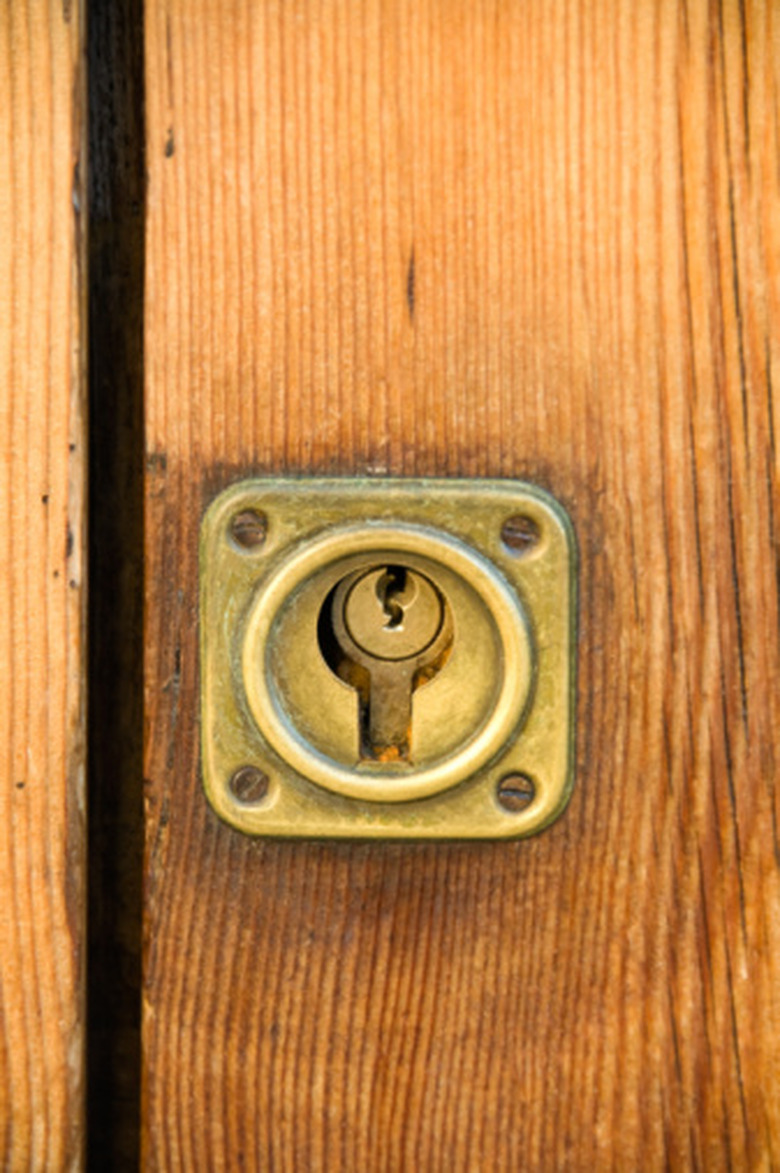How To Test Brass At Home
Brass is a man-made alloy, meaning it is comprised of a number of different metals. About 96 percent of the metal in brass is a combination of copper and zinc; But it also include traces of tin and lead. Brass may be identified by its yellowish color, but this may lead to misidentification. Its density, or compactness, isn't subject to interpretation, and can be calculated with a few simple tools.
Step 1
Use a scale to determine the weight of the piece of metal in pounds. For example, the weight might be 3 lb.
Step 2
Convert the wight to a mass in kilograms, by dividing by 2.2046 — since a kilogram equals 2.2046 lb. Continuing the example, you have 3 lb. divided by 2.2046 lb. per kilogram — or 0.23 kg.
Step 3
Fill the graduated beaker with water up to the 100ml line. Drop the metallic object into the beaker. The water level rises. Record the new volume on the side of the beaker. For example, the new water level might be 129ml.
Step 4
Subtract the the initial water level from the final water level, to obtain the volume of the metallic object.
The amount the water level rose, equals the volume of the object, according to Archimedes' principle.
In our example, the volume of the object is 129ml minus 100ml, leaving 29 ml. A milliliter is equivalent to a cubic centimeter, so the volume may be written as 29 cubic centimeters.
Step 5
Convert the volume to cubic meters by dividing by 1,000,000. Performing this step leads to 29 cubic centimeters divided by 1,000,000 cubic centimeters per cubic meter, or a volume of 2.9 times 10^-5 cubic meters. The symbol "^ denotes an exponent and is read as "to the power."
Step 6
Divide the mass by the volume, to obtain the density of the metallic object in kilograms per cubic meter. Completing the exercise yields 0.23 kg divided by 2.9 times 10^-5 cubic meters — or a density of 7,931 kilograms per cubic meter.
Comparing to the range of known densities for brass, you conclude the metallic object is made of brass. For comparison, brass is most often confused with copper which has a density of 8,930 kilograms per cubic meter
Things Needed
- Scale
- Calculator
- Graduated beaker
TL;DR (Too Long; Didn't Read)
Use metric units when performing density calculations to get the right result.
Cite This Article
MLA
Hirsch, William. "How To Test Brass At Home" sciencing.com, https://www.sciencing.com/test-brass-home-8070171/. 24 April 2017.
APA
Hirsch, William. (2017, April 24). How To Test Brass At Home. sciencing.com. Retrieved from https://www.sciencing.com/test-brass-home-8070171/
Chicago
Hirsch, William. How To Test Brass At Home last modified March 24, 2022. https://www.sciencing.com/test-brass-home-8070171/
